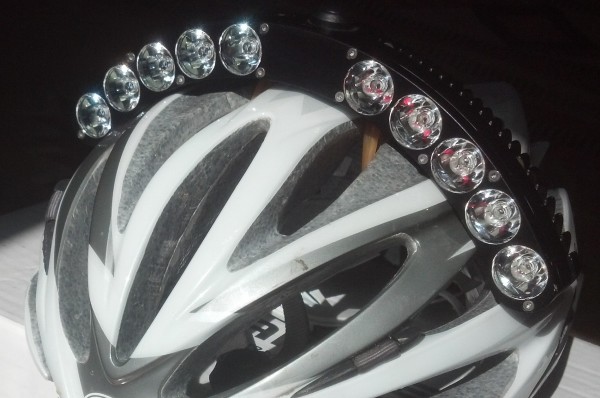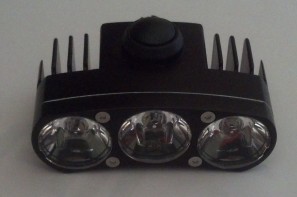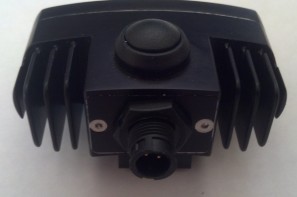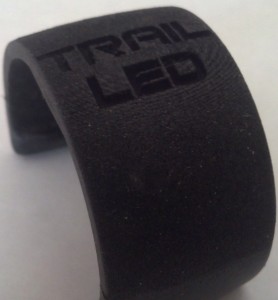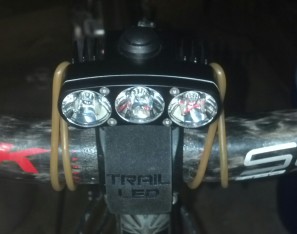Trail LED, makers of the industry leading 6000 lumen Halo light, has upgraded their entire line with a new generation of LEDs, promising an increase in brightness, better clarity, and longer run times. Handmade in Plano, Texas, Trail LED’s unique design and cutting edge technology promises commuters and solo 24-hour racers alike better visibility and more comfort than their competitors. We are going to put their claims to the test, but first we have a quick look at the ten-lamp Halo, five-lamp DS, and three-lamp XXX models, as well as a sneak peak of their soon to be released bar mount.
Get blinded by the light after the break.
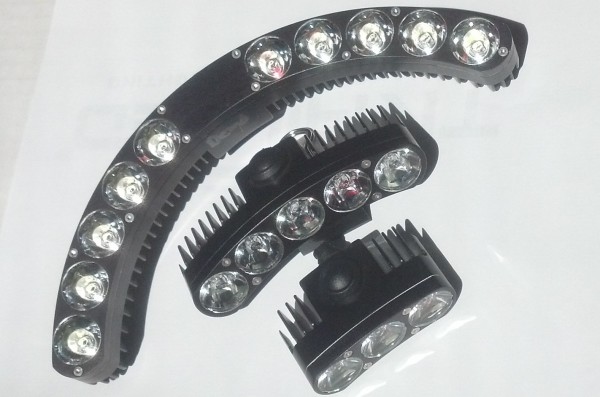
You know a helmet light is serious if the instructions start out like this:
!!!WARNING!!!!
Do not look at the light when plugging it in or turning it on.
Do not shine it into other people’s eyes.
Trail LED claims a cornea-burning 6000 lumens for their top-of-the-line Halo, 3000 for the DS model, and 1800 for the XXX, numbers that were generally borne out in MTBR’s extremely thorough 2013 shootout. According to company founder Grady Pace, the use of the new Cree XLamp XP-L LEDs will result in a 10 percent boost in those brightness levels, as well as a better quality light. The new LEDs have a higher color rendering index, meaning they produce light that is more like daylight, making objects on the trail look the way your brain expects them to. This, according to Pace, means less eye strain and less required concentration, meaning that you can ride faster with less effort.
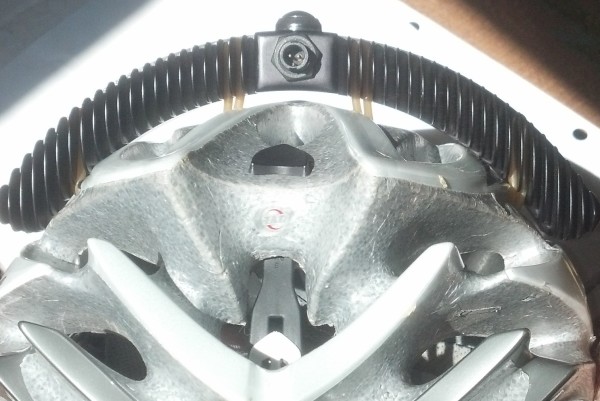
What sets Trail LED apart from other products is their helmet hugging designs. The curved profile on the Halo and DS models allow the lights to follow the contour of your noggin, and attach via a pair of very sturdy elastic bands that Trail LED claims are ozone, UV, and abrasion resistant. You simply hook the bands around the cooling fins and through the helmet vents – an included tire lever helps you grab the band to pull it through. If you have a completely smooth helmet adhesive pads are also included, but Pace claims this is really for moto riders, as they have been able to use the bands on the entire spectrum of city, enduro, and DH helmets.
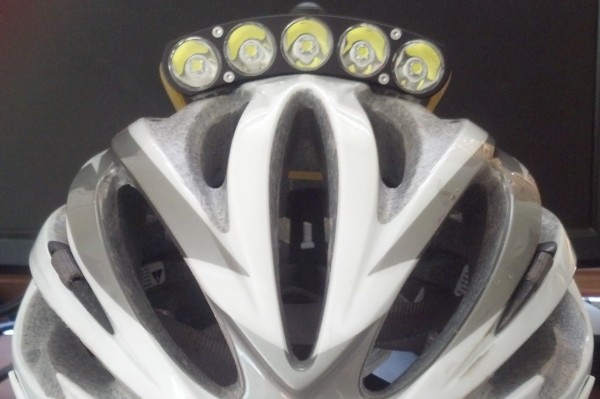
The use of multiple lamps across a curved structure is also supposed to improve visibility, as it will generate shadows from multiple points. Pace states that, “this results in you being able to see rocks, roots, ruts, and drops without two lights. With the DS and Halo, you actually see better than in daylight.” We will test these claims in the coming weeks.
The immediate advantage of the design and mounting system is clear: you don’t feel the weight. While the BikeRumor scale is en route to Eurobike, I can attest that I can barely tell when the 800+ gram Halo is attached to my helmet. This is all the more impressive, as I am extra sensitive after spearing the ground and almost breaking my neck two days ago. The low profile will also make the system less likely to caught on low branches – a problem I faced regularly when navigating the cedar trees of Austin and the rhododendron tunnels of Asheville.
The bodies are CNC’d and the lights are assembled in Texas and the quality looks solid. I was particularly taken by the subtle white line in the seal between the fore and aft body sections. The single power/mode button, common to all the units, sticks up just enough to be obvious to heavily gloved fingers, and it makes a satisfying click when depressed. The power cord attaches via a small bayonet mount, which does appear to sacrifice some strength for a svelte interface. Each unit offers a high and low power mode, six flash patterns, and a super-low emergency mode. The lights are shockingly bright, even in flash mode, which borders on being seizure-inducing. We will have comparison shots and testing data in the complete product review.
The XXX and DS include a 75 x 60 x 45 mm battery, the Halo measures 140 x 50 x 50mm. It is wrapped in a heavy rubber seal, which should insulate well, and be easy to grasp with semi-conscious, frozen fingers. The two batteries are cross compatible between all three units. Advertised burn times on high prior to the LED upgrade are two hours for the Halo and XXX, and 90 minutes for the DS. Both batteries charge at a 1:1 ratio; for every hour burning on high, it is one hour to recharge the battery, however, the claim is slightly off for the DS, which has a 3:4 burn/charge ratio. “Pro” kits include a second battery, or they can be purchased for $45 for the smaller XXX/DS battery and $75 for the Halo battery.
Power does not come cheaply: the rapture-like Halo will set you back $1,119.00, the DS is $499.99, and the XXX is $299.99 – all unchanged from the previous models.
The new handlebar mounting bracket is rather ingenious. Shaped like the letter C, the polycarbonate piece clips over a stem face plate, the XXX (shown) or DS light sits on top, with the elastic straps wrapped around the bar to hold it all together. Its an elegant solution to address bars and stems crowded by computers, dropper switches, and a bazillion other doohickeys, but it requires a four bolt face plate design so the clamp can get some purchase on the gap between the stem and face plate. The light can also be mounted below the stem, which is a good option for road (or XTR Di2) applications without cables cutting through the beam. To attach the battery to the frame, Trail LED includes the same sort of Velcro strap used by most light companies.
As soon as my neck heals, I will put the bracket though the paces to see how well it works, and we should have pricing and availability info by then as well.
